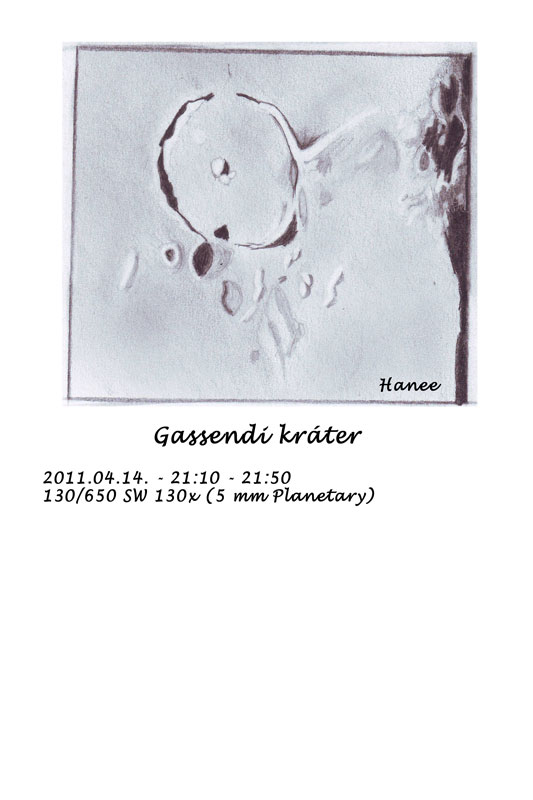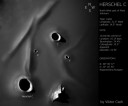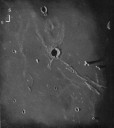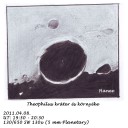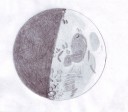
On a beautiful spring evening with mostly clear, warm skies, I was able to sketch the famous fourth ring of the Nectaris basin, namely, the Altai scarp or Rupes Altai. Sunlight was bouncing off the outermost visible rim of this combination basin ring / fault enhancing its visibility north of impressive crater Piccolomini (88 km.) and beyond for 500 kilometers. Some of the sheer cliffs are 3.5 – 4 km.high and are nicely treated and described in Steve Bounce’s interesting study and profile in Selenology Today #10, June 2008.
What was also eye catching about this view was the fine illumination and shadow on the terraces of crater Piccolomini. The 2 km. tall central peaks of this crater above its smooth floor added to the grandeur of the eyepiece view.
Sketching Information:
Sketched on white paper using graphite pencils (HB, 4B, 6B), blending stumps, white Pearl erasers
10” f/ 5.7 Newtonian riding on an equatorial platform and a 6mm eyepiece for 241x
Date and Time: April 10, 2011, 01:50-02:40 UT
Weather: partly, calm, 65 degrees F (18 degrees C)
Seeing: Antoniadi II-III
Lunation: 6.4 days
Moon 34.8% illuminated
Frank McCabe



